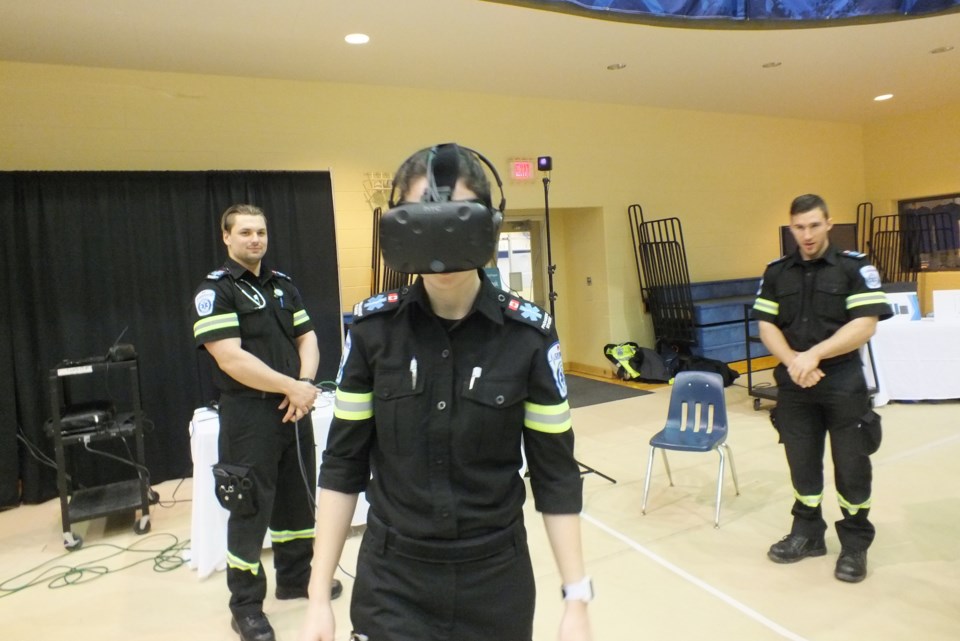NEWS RELEASE
GEORGIAN COLLEGE
*************************
Before the urgent need to offer experiential learning in a remote way came about due to COVID-19, Georgian College has been on the cutting edge of immersive technology, offering virtual hands-on learning to a number of programs – and there is more to come.
“Georgian has already been exploring VR (virtual reality) and simulation technologies in a variety of our programs,” said Kevin Weaver, Vice President, Academic.
“It only makes sense for Georgian to accelerate these efforts and continue to be a leader. Georgian, even before COVID-19, was intentionally moving in this direction. It is even more important now as we find ourselves not able to deliver in-person activity at this time," said Weaver.
As a professor in the paramedic program, Rob Theriault was seconded to the position of Immersive Technology Lead well before COVID-19, illustrating the importance Georgian had already placed on immersive technology and experiential learning platforms.
“Virtual reality, unlike any other educational technology, provides experiential learning, where students can do things with their hands, think critically and make decisions that have measurable results,” said Theriault.
Theriault describes the following scenario: Just outside of a patient’s room, two nursing students meet, wash their hands and don their personal protective equipment.
Then, they enter the patient’s room to conduct an assessment. Inside the room, other classmates are standing along the walls, observing. One student reaches for the patient’s wrist to feel her pulse. It’s fast.
Meanwhile, the other nursing student asks the patient questions and looks at the heart monitor to see her vital signs. A stethoscope is used to listen to her chest and reveals that her lungs are wheezing. The students immediately recognize that their patient needs a Ventolin treatment.
“This experience did not take place in a hospital or even a nursing lab,” said Theriault. “It took place in virtual reality, with the instructor and nursing students separated by significant distances. This isn’t just virtual reality, it’s the future reality.”
Learning through video conferencing and textbooks works well in many remote teaching situations, but health-care students are better served by their teacher, face-to-face, in a virtual reality hospital, anatomy lab or cadaver lab. Trades students benefit by being at a construction site.
Until recently, this was only possible in real life. Now, wearing a VR headset immerses students in an entirely new world of the professor’s choosing.
“Georgian saw the opportunity and the strategic need to invest so that we were positioned to take a leadership position,” noted Weaver. “Appointing an immersive technology faculty lead is critical as we need a champion and expert in immersive technology to help guide us in this new direction. Fortuitously, our lead is a frontrunner in this activity, and was actively implementing these technologies into health programming. Having a peer to work within the program areas to explore this technology is critical to success."
Students in the architectural technology program have been learning and designing in VR for more than two years. Georgian’s paramedic students were introduced to VR for patient simulation in 2019, and many more programs are currently exploring VR’s potential.
Faculty in the honours bachelor of science – applied life sciences (Specialization in Biomedical Techniques) degree with biotechnology-health diploma program are exploring Nanome, a VR program that enables students to manipulate molecules, experiment, design and learn at the nanoscale.
Students in the fine arts program recently learned how to paint and sculpt in VR using Tilt Brush, and faculty in the Indigenous studies program are exploring alternative ways to conduct “learning on the land” activities, using 360-degree video and the EngageVR platform.
The absence of face-to-face labs and hands-on learning due to COVID-19 has only increased the urgency of having the technology, and Theriault is currently working on a plan to invest in more hardware and software for a number of different programs.
*************************
